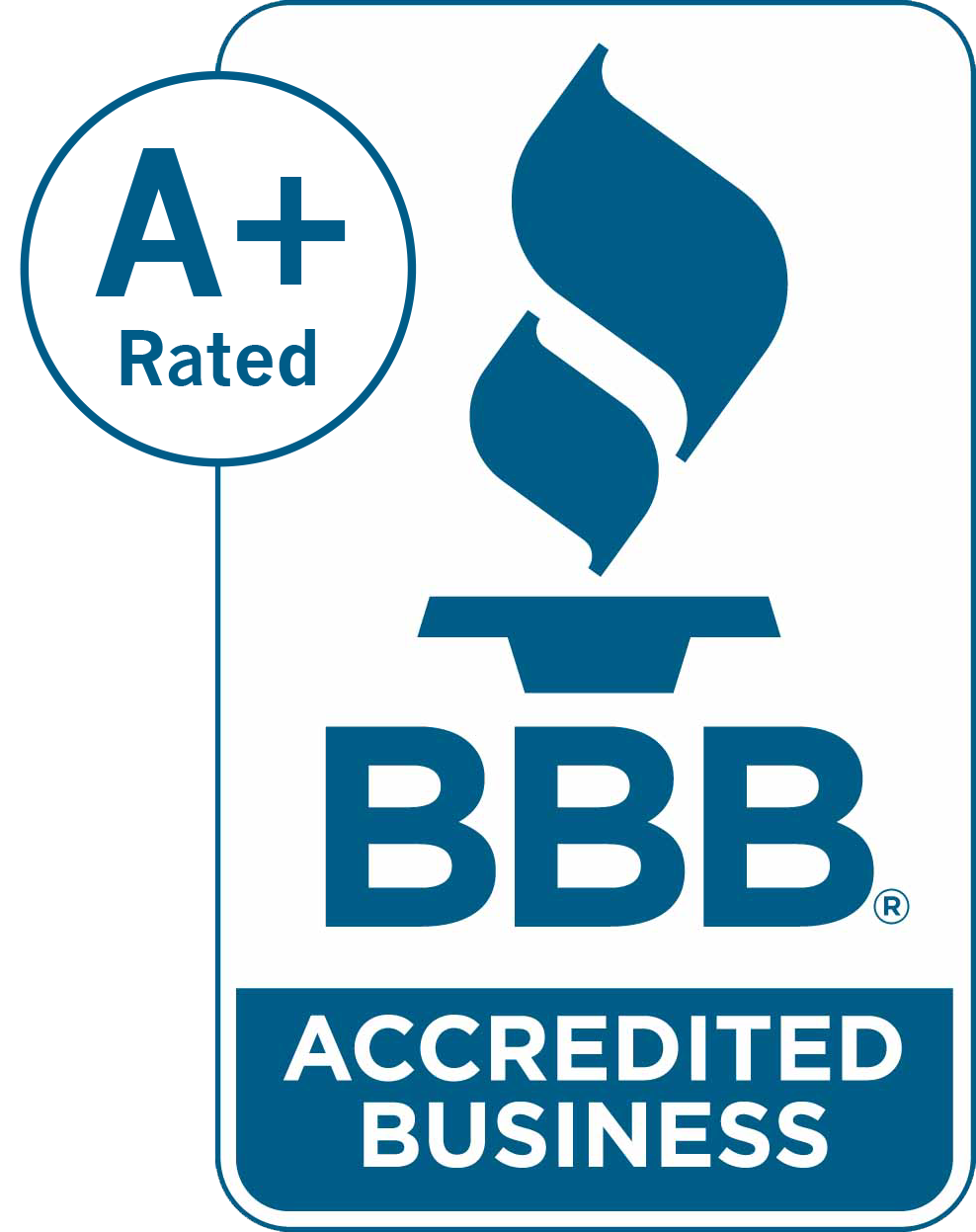California Renter Rights: CA Renter Rights for 2024

Introduction
As we enter 2024, understanding your rights as a renter in California has never been more crucial. With evolving legislation and a dynamic housing market, staying informed is vital to maintaining a healthy landlord-tenant relationship and protecting your interests. This comprehensive guide delves into the intricacies of California’s renter rights, providing you with the knowledge you need to navigate the rental landscape confidently, including compliance with California’s landlord-tenant laws.
1. The Fundamentals of California Renter Rights

1.1 Overview of California Landlord-Tenant Laws
California’s landlord-tenant laws are designed to balance the rights and responsibilities of both parties. These laws cover various aspects of the rental process, from lease agreements to evictions, ensuring fair treatment and clear expectations for all involved.
The California Civil Code provides an essential legal framework for landlord-tenant relations, guiding landlords on necessary disclosures and compliance with tenant screening laws, ensuring that both landlords and tenants understand their rights and responsibilities under California law.
1.2 The California Tenant Protection Act of 2019
Enacted to address the state’s housing crisis, this act introduced statewide rent control and just cause eviction protections. The California Tenant Protection Act includes rent control regulations that impact both landlords and tenants. Understanding its provisions is crucial for both landlords and tenants in 2024.
1.3 Federal Fair Housing Act and California Fair Employment and Housing Act
These laws prohibit discrimination in housing based on protected characteristics such as race, color, national origin,
religion, sex, familial status, and disability. In California, additional protections extend to sexual orientation, gender identity, and source of income.
Related Terms: pay rent, rental agreement, repair and deduct remedy, rental units, residential tenants, rent payments, california rental laws, california landlord tenant law, month’s rent, one month’s rent
2. Rental Agreements and Leases

2.1 Types of Rental Agreements in California
Learn about the differences between month-to-month and fixed-term leases, and how they affect your rights and obligations as a tenant.
2.2 What Must Be Included in a California Lease Agreement
Discover the essential elements that should be present in every California lease agreement to ensure its legality and enforceability. California landlords must ensure that lease agreements comply with state laws, including giving written notice before entering a rental, adhering to limits on security deposits, and following stipulations around tenant screening and eviction processes.
2.3 Oral vs. Written Agreements: Legal Implications
While oral agreements are legally binding for one year or less leases, we’ll explore why written agreements are always recommended.
3. Rent Control and Rent Increases

3.1 California’s Statewide Rent Control
Understand the basics of AB 1482 and how it limits annual rent increases for eligible properties across the state.
3.2 Local Rent Control Laws
Many California cities have their own rent control ordinances. We’ll discuss how these interact with state law and what they mean for tenants. Landlords must understand local rent control regulations to ensure compliance and avoid legal issues.
3.3 Legal Rent Increases and Notice Requirements
Learn about the proper procedures landlords must follow when increasing rent, including notice periods and frequency limitations.
4. Security Deposits

4.1 Maximum Security Deposit Limits
California law sets clear limits on how much landlords can charge for security deposits. We’ll break down these limits and exceptions. For residential rental properties, the maximum security deposit is typically two months’ rent for unfurnished units and three months’ rent for furnished units.
4.2 Security Deposit Return Process
Understand your rights regarding the return of your security deposit, including timelines and reasons for deductions.
4.3 Interest on Security Deposits
Some California cities require landlords to pay interest on security deposits. Find out if this applies to you and how it’s calculated.
5. Repairs and Maintenance

5.1 The Implied Warranty of Habitability
Every rental unit in California must meet certain standards of habitability. We’ll explain what this means and how it protects tenants.
5.2 Tenant’s Right to Repair and Deduct
Discover when and how you can legally make repairs and deduct the cost from your rent.
5.3 Landlord’s Responsibility for Repairs
Learn about the timeframes and processes landlords must follow when addressing repair requests. Promptly addressing repair requests is crucial for ensuring tenant safety, which is a fundamental responsibility of landlords. Prioritizing tenant safety helps build positive landlord-tenant relationships and complies with California rental laws.
6. Privacy and Entry Rights

6.1 Landlord’s Right to Enter
Understand the circumstances under which your landlord can legally enter your rental unit and the notice requirements.
6.2 Tenant’s Right to Quiet Enjoyment
Explore what the covenant of quiet enjoyment means for California renters and how it’s protected by law.
6.3 Eviction Process and Tenant Rights
The eviction process in California involves several steps that both landlords and tenants must follow. One crucial step is the issuance of an eviction notice, which landlords are legally required to provide. This notice must meet specific requirements that vary depending on the reason for eviction. Tenants should respond promptly to avoid potential legal issues.
6.4 Just Cause Eviction Requirements
California law provides protections against no fault evictions, ensuring that tenants cannot be evicted without just cause, especially after residing in a rental unit for at least 12 months. Landlords must adhere to these legal protections and provide valid reasons for eviction, reinforcing tenant rights and compliance with the law.
7. Evictions and Tenant Protections

7.1 Just Cause Eviction Requirements
Under AB 1482, most evictions now require just cause. We’ll explain what qualifies as just cause and the protections this offers tenants.
7.2 Eviction Process and Tenant Rights
Navigate the eviction process, from notice to court proceedings, and understand your rights at each stage.
7.3 Protections Against Retaliation
California law prohibits landlords from retaliating against tenants who exercises their legal rights. Learn to identify and address retaliatory actions.
7.4 Tenant Rights to Sublet
Subletting can be a viable option for tenants who need to move temporarily. However, it is crucial to have clear communication with the landlord to avoid potential landlord-tenant disputes. Misunderstandings or lack of consent can lead to conflicts, making it essential to follow proper procedures and legal requirements.
8. Subletting and Assignment

8.1 Tenant Rights to Sublet
Understand your rights and responsibilities when it comes to subletting your rental unit in California.
8.2 Landlord Approval Process
Learn about the steps involved in obtaining landlord approval for subletting and what to do if permission is unreasonably withheld.
9. Roommates and Co-tenants

9.1 Rights and Responsibilities of Co-tenants
Explore the legal implications of sharing a rental unit and how it affects your lease agreement.
9.2 Adding or Removing Roommates
Understand the process and potential consequences of changing the occupants on your lease.
Section 8 Housing Choice Voucher Program
The Section 8 Housing Choice Voucher Program provides rental assistance to low-income families, older people, and disabled individuals. Local housing authorities play a crucial role in administering these programs, ensuring compliance with local regulations and providing resources and support for tenants. Tenants can file complaints with these authorities if landlords engage in unlawful practices, such as eviction or discrimination.
10. Affordable Housing and Rent Subsidies

10.1 Section 8 Housing Choice Voucher Program
Learn about a federal program that helps low-income families, older people, and disabled individuals afford decent and safe housing in the private market.
10.2 California’s Affordable Housing Initiatives
Discover state-specific programs aimed at increasing access to affordable housing for California residents.
Legal Reasons for Early Termination
When breaking a lease early, it’s important to understand the termination and eviction rules that apply. These rules, governed by state laws, outline how landlords can terminate tenancies and initiate evictions. They also provide legal protections to tenants, ensuring their rights are safeguarded and they receive fair treatment during the eviction process.
11. Breaking a Lease Early

11.1 Legal Reasons for Early Termination
Understand the circumstances under which you can legally break a lease without penalty.
11.2 Consequences and Mitigation of Damages
Learn about your responsibilities when breaking a lease early and strategies to minimize financial impact.
11.3 Required Disclosures in California
California law requires landlords to provide specific disclosures to tenants, including information on lead-based paint, mold, and the presence of any known sex offenders in the area. These disclosures are essential to ensure tenant safety and compliance with state regulations.
12. Landlord Disclosures
12.1 Required Disclosures in California
From lead-based paint to bed bugs, explore the various disclosures landlords must provide tenants under California law.
12.2 Consequences of Failure to Disclose
Understand your rights and potential remedies if your landlord fails to make required disclosures.
12.3 Legal Grounds for Withholding Rent
In California, tenants have the right to withhold rent under certain conditions, such as when the landlord fails to make necessary repairs. However, if a tenant fails to pay rent on time, the landlord must provide a three-day notice to pay rent or vacate. If the tenant does not comply, legal consequences can follow, including potential eviction proceedings.
13. Rent Withholding and Rent Escrow
13.1 Legal Grounds for Withholding Rent
Discover when it’s legally permissible to withhold rent in California and the proper procedures to follow.
13.2 Rent Escrow Accounts
Learn about using rent escrow accounts as a tool to address serious habitability issues while protecting yourself legally.
13.3 Legal Limits on Late Fees
Understand the legal limits on late fees in California, including the maximum allowable charges and the required grace periods. The amount of monthly rent can impact the calculation of these late fees, as they are often a percentage of the monthly rent. Proper documentation of monthly rent payments and transactions is crucial to prevent disputes between landlords and tenants.
14. Late Fees and Grace Periods
14.1 Legal Limits on Late Fees
Understand California’s regulations on late rent fees and what constitutes a reasonable late fee.
Right to Organize
Tenants have the right to form, join, and participate in tenant associations and other organizations. These tenant organizations play a crucial role in advocating for tenant rights and ensuring that landlords cannot retaliate against tenants for their involvement. Participating in tenant organizations is a legitimate exercise of rights, providing tenants with legal protections under California law against retaliatory actions by landlords.
14.2 Rent Grace Periods
Explore the concept of rent grace periods and their application in California rental agreements.
15. Tenant Associations and Organizing
15.1 Right to Organize
Learn about your legal right to form and participate in tenant associations in California.
15.2 Protected Activities
Understand what activities are protected under California law when it comes to tenant organizing and advocacy.
15.3 Lock Changes and Security Measures
Victims of domestic violence have the right to request lock changes for their safety. Additionally, landlords must follow legal protocols to protect the personal property of tenants who are victims of domestic violence, ensuring proper notification and handling of any abandoned belongings.
16. Domestic Violence Protection
16.1 Early Lease Termination for Victims
Discover the protections available for victims of domestic violence, including the right to terminate a lease early without penalty.
Service and Emotional Support Animals
Landlords must accommodate tenants with service and emotional support animals, even if the property has a no-pet policy. It’s important to note that California rent control laws may also impact pet policies, as they include provisions that protect tenant rights and ensure compliance with both statewide legislation like the Tenant Protection Act (AB 1482) and local ordinances.
16.2 Lock Changes and Security Measures
Learn about your rights to enhance security in your rental unit if you’re a victim of domestic violence, stalking, or elder abuse.
17. Pet Policies and Service Animals
17.1 Landlord’s Right to Prohibit Pets
Understand the extent to which landlords can restrict pets in rental properties.
17.2 Landlord vs. Tenant Responsibilities
In California, the responsibilities of landlords and tenants regarding utilities are clearly defined. Landlords are typically responsible for ensuring that the property has access to essential utilities such as water, electricity, and gas. Tenants, on the other hand, are usually responsible for paying for these utilities unless otherwise specified in the lease agreement.
Property owners must manage these utilities effectively to ensure compliance with state laws and maintain a healthy landlord-tenant relationship. This includes understanding their authoritative rights and responsibilities to protect their investments and provide a habitable living environment for tenants.
17.2 Service and Emotional Support Animals
Learn about the special protections and accommodations required for service animals and emotional support animals under California law.
18. Utility Responsibilities
18.1 Landlord vs. Tenant Responsibilities
Clarify who’s responsible for various utility services in rental properties.
18.2 Shared Meters and Submetering
Understand your rights regarding utility billing when meters are shared between units.
18.3 Landlord Responsibilities for Mold Remediation
Landlords are required to address mold issues promptly to ensure a safe living environment. Mold can pose significant health risks, and it is the landlord’s duty to remediate it effectively. Prioritizing tenant safety by addressing mold issues not only ensures compliance with California rental laws but also helps build positive landlord-tenant relationships.
19. Mold and Environmental Hazards
19.1 Landlord Responsibilities for Mold Remediation
Learn about your landlord’s obligations when it comes to addressing mold issues in your rental unit.
Required Safety Devices
Landlords must ensure that all required safety devices, such as smoke detectors and carbon monoxide detectors, are installed and functioning properly. Prioritizing tenant safety by providing these necessary safety devices is crucial for maintaining safe living conditions and building positive landlord-tenant relationships. This also ensures compliance with California rental laws.
19.2 Tenant Rights Regarding Environmental Hazards
Understand your rights and options when faced with environmental hazards in your rental property.
20. Security and Safety Measures
20.1 Required Safety Devices
Explore the safety features landlords are required to provide, such as smoke detectors and carbon monoxide alarms.
Application Fees and Screening
When applying for a rental property, prospective tenants may be required to pay an application fee. This fee typically covers the cost of background and credit checks. California law requires landlords to follow specific guidelines during the application process, ensuring transparency and fairness. This includes providing a receipt for the application fee and disclosing the criteria used for tenant selection.
20.2 Tenant Rights to Additional Security
Learn about your options for requesting and installing additional security measures in your rental unit.
21. Rental Application Process
21.1 Application Fees and Screening
Understand the legal limits on application fees and what landlords can consider during the screening process.
Legal Considerations for Short-Term Rentals
When it comes to short-term rentals, such as those listed on Airbnb, it’s crucial to be aware of the various legal considerations. Local ordinances can significantly impact short-term rental practices, as city-specific laws may impose stricter regulations than statewide legislation. For instance, California’s rental regulations highlight the importance of understanding these local ordinances to ensure compliance and protect both landlords’ and tenants’ rights.
21.2 Tenant Screening Reports
Learn about your rights regarding tenant screening reports and how to address inaccuracies.
22. Short-Term Rentals and Airbnb
22.1 Legal Considerations for Short-Term Rentals
Explore the legal landscape surrounding short-term rentals in California, including local regulations and lease implications.
Landlord Responsibilities After a Disaster
In the aftermath of a natural disaster, landlords have specific responsibilities to ensure the property is habitable. This includes making necessary repairs and addressing any safety hazards promptly. Prioritizing tenant safety is crucial, as it not only ensures safe living conditions but also helps build positive landlord-tenant relationships and complies with California rental laws. Tenants have the right to a safe and livable environment, and landlords must act swiftly to meet these obligations.
22.2 Tenant Rights to Participate in Home-Sharing
Understand your rights and responsibilities if you wish to engage in short-term rentals of your leased property.
23. Natural Disasters and Tenant Rights
23.1 Landlord Responsibilities After a Disaster
Learn about your landlord’s obligations in the aftermath of natural disasters like earthquakes, wildfires, or floods.
23.2 Tenant Options During Reconstruction
Understand your rights and options if your rental unit becomes uninhabitable due to a natural disaster.
24. Legal Resources for California Tenants
24.1 Tenant Advocacy Organizations
Discover non-profit organizations and legal aid services available to assist California tenants.
24.2 Pending Legislation
New laws may provide additional tenant protections, supplementing statewide eviction protections under the Tenant Protection Act. Local regulations can offer enhanced safeguards, so tenants are encouraged to check local resources for more comprehensive protections.
24.2 Government Resources
Explore state and local government resources designed to help tenants understand and enforce their rights.
25. Future of Renter Rights in California
25.1 Pending Legislation
Get a glimpse of proposed laws that could affect renter rights in California in the coming years. Evolving policies also significantly impact landlord tenant relationships by promoting fairness, compliance, and equitable treatment, which fosters a transparent and supportive renting environment.
25.2 Trends in Housing Policy
Understand the broader trends shaping housing policy in California and how they might impact renters in the future.
People Also Ask
- Q: Can a landlord raise rent in California in 2024? A: Yes, but with limitations. For properties covered by AB 1482, rent increases are capped at 5% plus the percentage change in the cost of living (CPI) or 10%, whichever is lower. California landlords must comply with these regulations to ensure they are not exceeding the legal limits. Local rent control laws may impose stricter limits.
- Q: How much notice does a landlord have to give for entry in California? A: Generally, landlords must provide 24 hours’ written notice before entering a rental unit, except in emergencies.
- Q: Can a tenant break a lease due to job relocation in California? A: California law doesn’t explicitly allow breaking a lease for job relocation. However, tenants may negotiate with their landlord or sublet if the lease allows.
- Q: What is considered normal wear and tear in California rentals? A: Normal wear and tear includes minor wall scuffs, worn carpet in high-traffic areas, and faded paint. Landlords cannot deduct these from security deposits.
- Q: How long does a landlord have to return a security deposit in California? A: Landlords must return the security deposit or a detailed accounting of deductions within 21 days after the tenant moves out.
Things To Know
- California has statewide rent control under AB 1482, limiting annual rent increases for many properties.
- In California, just cause is required for most evictions of tenants who have lived in the unit for at least 12 months.
- Landlords cannot discriminate based on source of income, including Section 8 vouchers.
- Tenants can repair and deduct under certain conditions if landlords fail to make necessary repairs.
- California law provides special protections for victims of domestic violence, including early lease termination rights.
- Understanding California’s landlord-tenant laws is crucial for navigating the rental market, ensuring compliance with lease agreements, termination, and eviction procedures, and protecting both property investments and tenant rights.
If This, Then That
- If your landlord tries to evict you without just cause: You may have grounds to contest the eviction in court.
- If your rental unit has serious habitability issues: You can withhold rent or use the repair and deduct remedy after proper notice.
- If your landlord enters your unit without proper notice: This may violate your right to quiet enjoyment, and you can file a complaint.
- If your security deposit isn’t returned within 21 days: You can send a demand letter and potentially sue in small claims court.
- If you’re facing discrimination: File a complaint with the California Department of Fair Employment and Housing.
- A landlord must provide proper notice before entering a rental unit.
FAQs
- Q: Can my landlord refuse to rent me because I have children? A: No, this would be considered familial status discrimination and illegal under California and federal law.
- Q: Am I responsible for my roommate’s unpaid rent? A: If you signed a joint lease, you could be held jointly and severally liable for the entire rent amount.
- Q: Can my landlord charge me for everyday wear and tear? A: Landlords cannot deduct normal wear and tear from your security deposit. California law requires landlords to return deposits within 21 days.
- Q: How much can my rent be increased each year? A: For properties covered by AB 1482, rent increases are limited to 5% plus CPI or 10%, whichever is lower. Local laws may have stricter limits.
- Q: Can I install my security system in my rental unit? A: You should get written permission from your landlord first. Many landlords allow this as long as it doesn’t cause permanent damage.
Real Case Law
- Green v. Superior Court (1974) This landmark case established the implied warranty of habitability in California, affirming that landlords must maintain rentals in livable condition. The California Civil Code supports this implied warranty by providing the essential legal framework that guides landlords on necessary disclosures and compliance with tenant screening laws, ensuring that both landlords and tenants understand their rights and responsibilities under California law.
- Birkenfeld v. Berkeley (1976) This case upheld the constitutionality of rent control laws in California, paving the way for local rent control ordinances.
- Moskovitz v. La Jolla Group II (1989) This case clarified the rules around security deposit returns and established that landlords who withhold deposits in bad faith may be liable for punitive damages.
- Hicks v. Kross (2022) A recent case that reinforced tenants’ rights to quiet enjoyment, awarding damages to a tenant whose landlord repeatedly entered the property without proper notice.
- Owens v. City of Oakland Housing, Residential Rent and Relocation Board (2020) This case addressed the intersection of local rent control laws and the Costa-Hawkins Rental Housing Act, affecting how vacancy decontrol is applied in certain situations.
Remember, while this guide provides a comprehensive overview of California renter rights in 2024, laws can change, and individual circumstances vary. Always consult with a qualified legal professional for advice on your specific situation.
Related Terms: prospective tenants, written notice, months rent, residential tenants, lease violations, landlord harassment, reasonable notice, evicting tenants, landlord tenant issues













